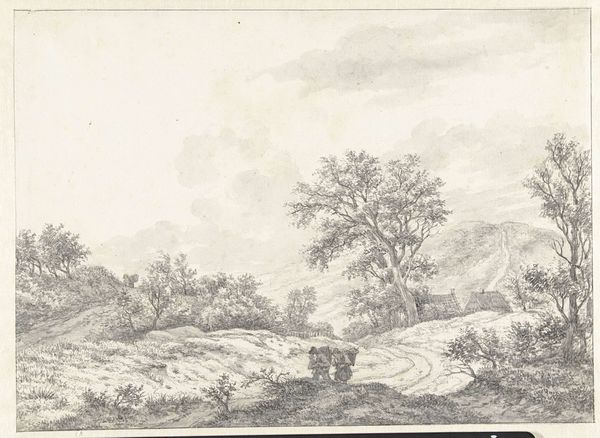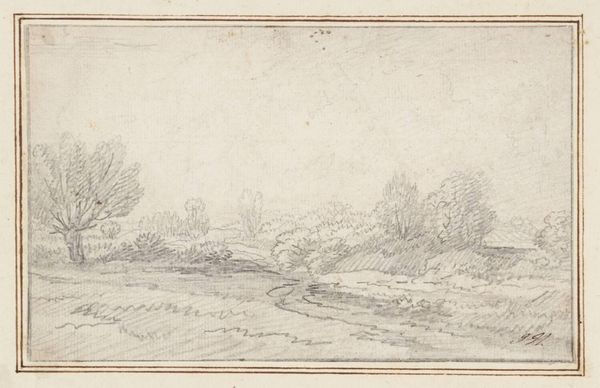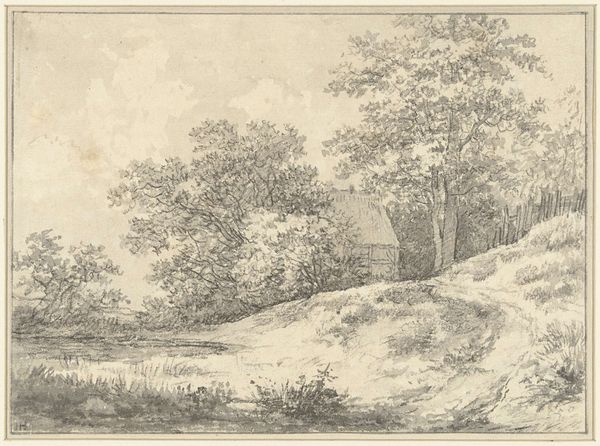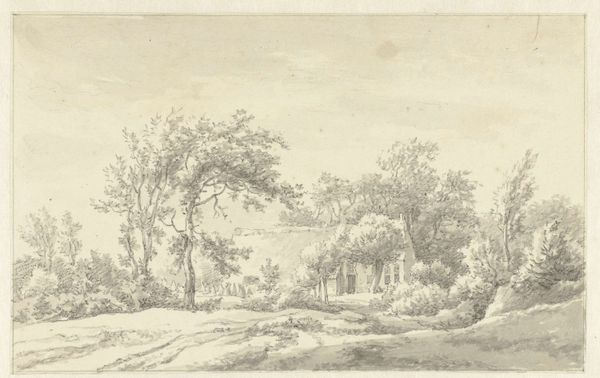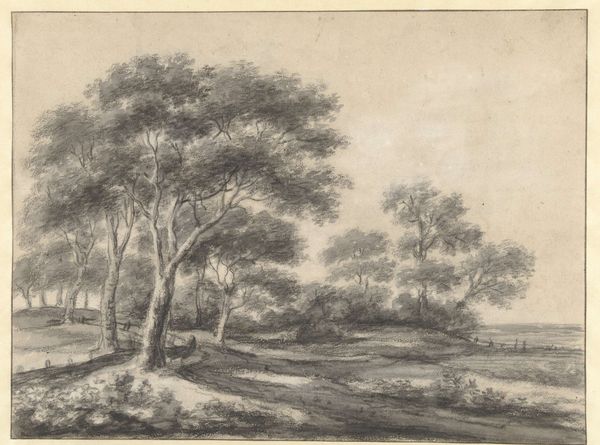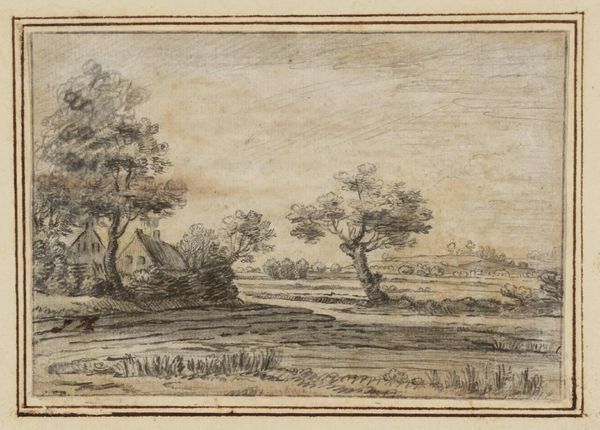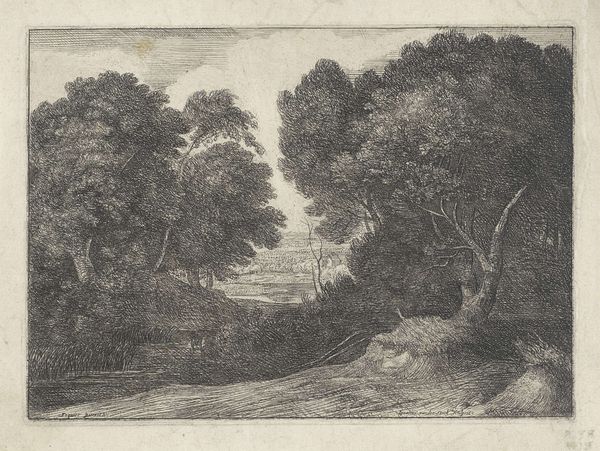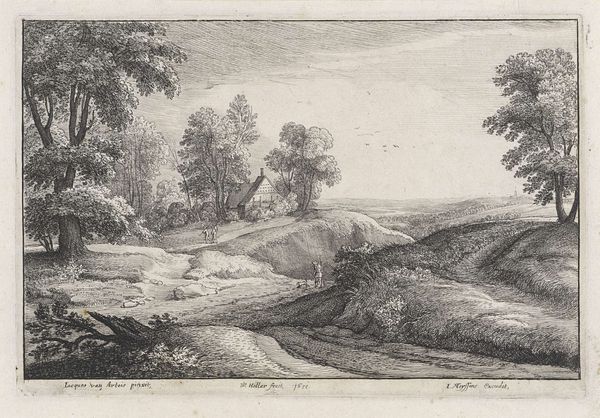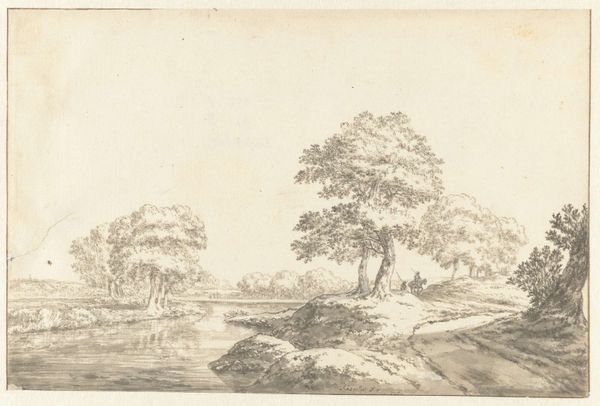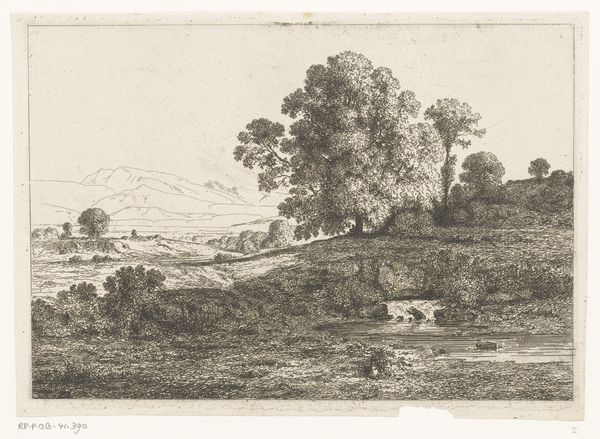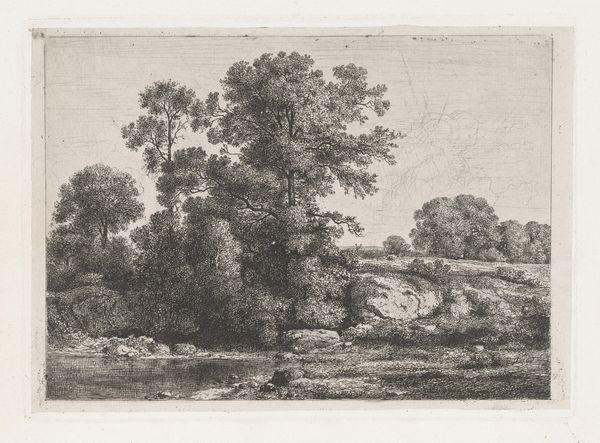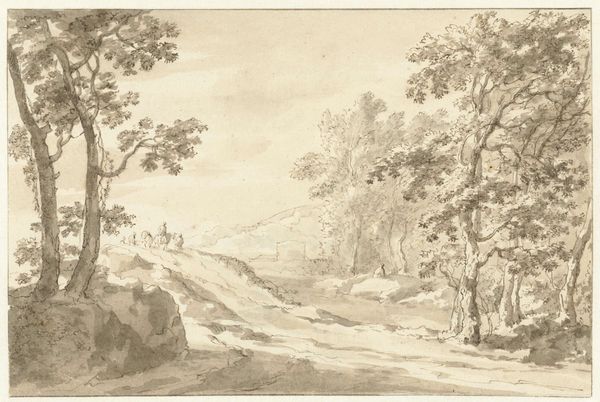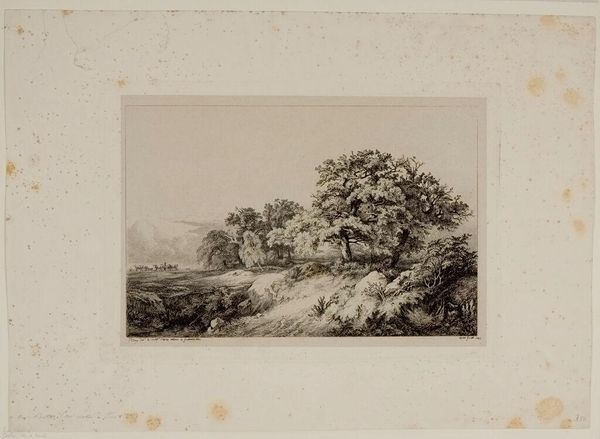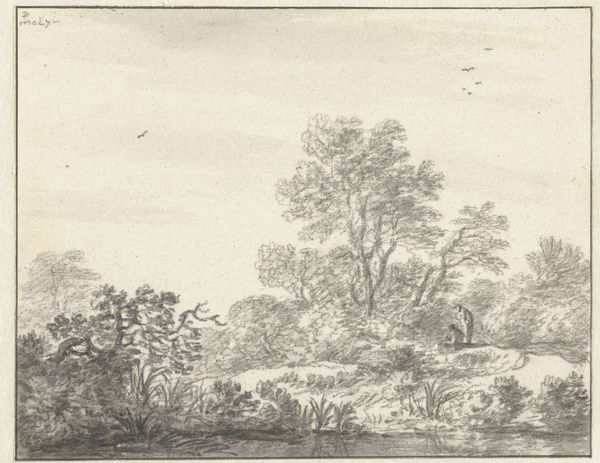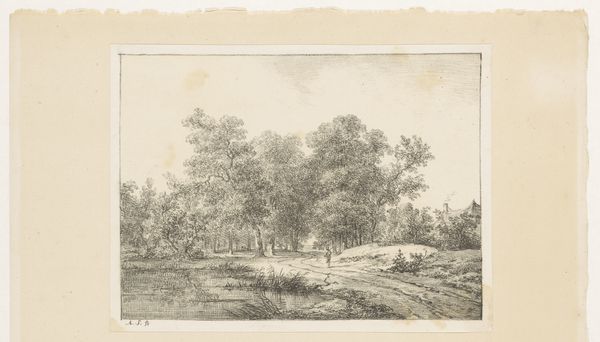
#
amateur sketch
#
toned paper
#
light pencil work
#
pencil sketch
#
incomplete sketchy
#
possibly oil pastel
#
coloured pencil
#
watercolour bleed
#
watercolour illustration
#
watercolor
Dimensions: height 274 mm, width 375 mm
Copyright: Rijks Museum: Open Domain
Curator: We’re looking at "Duinlandschap," or "Dune Landscape," an early 19th-century work, between 1784 and 1826, by Jacob Ernst Marcus, housed here at the Rijksmuseum. It seems to be watercolor and pencil on toned paper. Editor: It's unassuming, almost melancholic. The subtle gradations of color, mostly greys and browns, create a soft, dreamlike quality. The landscape, while natural, feels subdued. Curator: The application of watercolour tells a story of readily accessible materials for the traveling artist. Consider how easily portable paper, pencils and watercolours are in comparison to canvases, oils and solvents. Marcus made this image without a formal commission, on the go. This suggests a democratisation of art production. Editor: That toned paper contributes significantly, it serves to subdue the whiteness of a fresh paper, inviting soft visual details in layered strokes of watercolor wash and very fine, delicate lines, but why a landscape so bereft of… incident? Is the emptiness a symbolic echo of the political and economic landscape of the time? The absence of human figures seems particularly telling, amplifying that sense of solitude. Curator: Possibly, but let's consider it from a purely material perspective. Watercolour painting became more widespread because of the growth in paper production and, crucially, pre-mixed pigments becoming commercially available. Editor: The subdued palette invites contemplation about nature's enduring, almost unchanging presence despite our comings and goings, as if the land quietly observes our dramas. Even those sparse trees lining the dunes stand as steadfast guardians of a timeless realm. It is very romantic in a uniquely northern, restrained sense. Curator: Indeed. This piece stands as a testament to the evolving materials and markets of art, and the opportunities they brought to artists of the time. It also illustrates how these developments facilitated artistic exercises which in turn can contribute to a sense of artistic autonomy. Editor: A haunting reminder, then, that nature bears witness to all our endeavours. Curator: Yes. Its very lack of drama invites quiet observation, shifting the focus from spectacle to process, labour and accessible industry of that historical period.
Comments
No comments
Be the first to comment and join the conversation on the ultimate creative platform.
